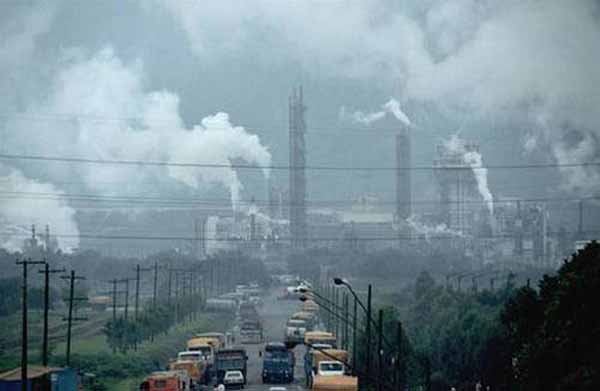IETV supports the 1point5tostayalive campaign ahead of COP 21 scheduled for Paris in December 2015 – Part 8

IDENTIFYING and mapping populations and communities at increased risk of climate-related respiratory diseases will also help to identify populations at risk for other climate-related health impacts as many environmentally mediated diseases share common risk factors.
Cancer refers to a group of diseases in which abnormal cells divide without control and can invade other tissues. There are more than 100 different types of cancer, usually named after the organ which it affects, such as liver or breast cancer. Cancer is the second leading cause of death in the United States. Lung cancer accounts for approximately 30% of overall deaths from cancer in the US; and though smoking is the main cause, air pollution also contributes to the occurrence of lung cancer. Although the development and causes of all cancers are not completely understood, pathogens, environmental contaminants, age, and genetics are all factors in its development.
Increased exposure to toxic chemicals, known or suspected to cause cancer, that are released into the environment following heavy rainfall or flooding and by increased volatilization of chemicals under conditions of increased temperature is clearly an increased risk associated with global warming.
The depletion of stratospheric ozone leads to an increase in UV exposure and temperature, increasing the risk of skin cancer and cataracts. Alternatively and ironically, an increase in exposure to UV radiation can lead to elevated levels of Vitamin D, which has been associated with a decreased risk of some types of cancer.
A decline in air quality and rise in concentrations of certain air pollutants increases the risk of lung cancer
Reducing greenhouse gas emissions and other hazardous air pollutants, through energy efficient power generation, lower vehicle miles travelled, and efficient industrial processes can decrease toxic outputs of fossil fuel-based power generation and transportation, such as sulfur oxide, nitrous oxides, heavy metals and particulate matter, thus mitigating the effects of climate change.
Other initiatives include increasing and preserving green space in urban settings, exploring the use of new technologies that decrease greenhouse gas emissions, such as nanotechnology, biofuels, electronic vehicles and solar cells. Employing sun safety actions, such as increased use of sunscreen and staying covered up in the sun, can reduce the risk of cancer from an increase in UV radiation.
The impacts of some technologies have not been fully explored and may have unintended negative health consequences. We still need a better understanding of the impact of increased heavy precipitation and flooding events on the risk of toxic contamination of the environment from storage facilities or runoff from land containing toxic chemicals, including the geographical areas, ecosystems, and populations most likely to be impacted, and the health outcomes that could result.
We need a better evaluation of the potential cancer risks through the entire lifecycle of biofuel production, including risks from novel air pollutants and changes in agricultural practices that may increase exposures to pesticides, herbicides, and other environmental contaminants. There may be cancer risks from the lifecycle emissions of carcinogens and untested compounds associated with alternative energy and transportation technologies, particularly electricity storage systems and photovoltaic systems. Many are skeptical of the lifecycle cancer risks of nuclear energy radiation through occupational and environmental exposure.
We need to develop mechanisms to conserve and explore marine and terrestrial biodiversity in environments likely to yield cancer cures and treatments. We also need to characterize and quantify changes in cancer rates after the implementation of specific greenhouse gas mitigation strategies, especially for existing fossil fuel-based energy production and use.
There is still so much to be done, but without a global effort to curb the rise in greenhouse gases that lead to global warming, we are powerless. Cop 21 must succeed where others have failed. We must cap the rise in temperature at 1.5 degrees Celsius or we will perish, which is why we have adopted the motto “1point5tostayalive”: 1.5 to stay alive!
Follow the video series on our youtube channel.










![Simón Bolívar - Liberator of the Americas [Photo credit: Venezuelan Embassy]](https://thevoiceslu.com/wp-content/uploads/2025/12/Simon-Bolivar-feat-2-380x250.jpg)
